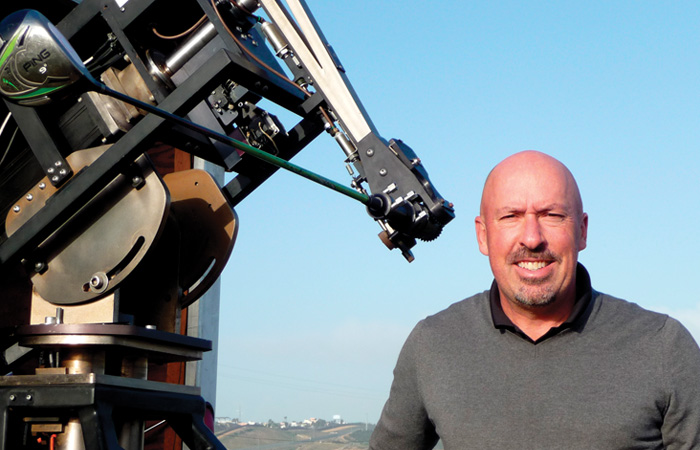Golf as we know it will change forever, once the USGA and R&A’s golf ball rollback rule goes into effect in a few years, starting in 2028.
The rollback rule was not made on a whim. In fact, the Distance Insights Project has been a joint initiative of the USGA and R&A since 2018, and its sole purpose has been to comprehensively analyze how hitting distance has been affected by innovations in equipment, golf course maintenance, launch monitors and fitness training.
As with any new golf rule, the question in everyone’s mind is “why?” Who benefits by a change to equipment to prevent ever-increasing ball distances that only the most elite of golfers currently achieve? The basic idea of the powers-that-be was to protect the “integrity” of golf courses, including their overall length and making sure that a variety of skills were needed to play them.
When the integrity of golf comes into question, it should not be just about golf courses but the game itself, as well. So many rules that came into effect in 2019 seemed to provide ways to circumvent much of that very quality. Ball moved? No worries (i.e. no penalty), in most cases. Ball in motion accidentally deflected by player or caddie or by an attended flagstick? Chill, it won’t cost you anything.

And most puzzling of all is the reduced “time for search” of a lost ball, from five minutes to three, in the interest of speeding up slow play. So, while a golfer might walk slowly or play slowly or insist on putting out every last putt in a friendly game, a two-minute reduction in search time for a very occasionally lost ball would speed up play? Of course, if a golfer lost one ball per hole, the group would save 36 minutes overall – but have you ever witnessed such a situation?
So, given that rules decisions have sometimes not made much scientific sense, what were some other reasons for the ball rollback rule? Said the folks in charge, “Our sport must be cognizant of the environmental impacts and what this means for golf courses, their operators and ultimately golfers and the communities around them. Longer golf courses require additional resources, including water and nutrients, all of which come with an environmental and economic cost.”
But what will happen to the thousands of golf balls that golfers have been hoarding in their refrigerators for years? How will the many golf stores all over the world and the ball manufacturers themselves dispose of all this? Might that have a greater impact on the environment with a few slightly longer golf courses? Not to mention the millions of dollars that will go into developing and testing the new golf balls.
After all, how many course owners are making their courses longer? Very few. Who has that much land available anyway? Moreover, most modern golf course architects are quite aware of the need to reduce land use and to maintain clean groundwater through the use of reduced fertilizers, herbicides and pesticides.

Most importantly, golfers in general, are very casual about their games and often do not even know the less-common rules, especially those that keep changing every few years. So, these same golfers will now be policed by a busy golf pro-shop attendant or a course-marshal who will bring out a list of thousands of balls to check if golfers’ balls are conforming in 2030? In remote corners of the golfing world?
How will the rollback actually change golfers’ games, especially for the average golfer? Is it true that those with the slowest speeds will “only” lose 5-10 yards off the tee?
Let’s see what a golf ball manufacturing company has to say. Mike Jordan, Director of Product Engineering of OnCore Golf, explains. Jordan, incidentally, has over 40 golf ball patents and is a veteran ball designer with previous stints at Titleist and Taylormade.
That he is passionate about what he does is immediately obvious when he says, “The golf ball is the most essential piece of equipment you use when playing golf. You hit it with every club in the bag as you move from tee to green.” He adds that it is the properties of the ball that aid a golfer in hitting bombs with a driver, creating tight draws with long irons, getting close to the flag with the wedges, and knocking putts straight into the hole.
How are golf balls of the future required to perform? The new rule requires that a driver with 11-degree loft, swinging at 125 mph and producing (back)spin of 2200 rotations per minute (rpm) should travel no more than 317 yards. What that means is that with a greater speed, greater loft and less spin (all conditions designed to increase distance!), the ball must still only travel the same 317 yards it is currently allowed to.
The rollback has been justified based on the fact that it will affect the longest hitters the most (some of whom are already swinging the driver at almost 125 mph) and those with the slowest driver speed the least. Even if the rollback involves “only” 5-10 yards loss of driver distance for those with the slowest speeds, what is important to know is that to hit the ball far requires all three – higher ball speed along with lower backspin and a higher launch angle. But average golfers tend to have higher backspin and inconsistent contact on the clubface, so, in practice, they could lose much more than the 5-10 yards claimed by the rule-makers.
Will golfers also lose the same 5-10 yards on fairway shots, which perhaps hurt those players with slower swing speed the most? According to Jordan, “It will affect every one of those shots. Any change to the ball to retard driver distance retards distance on all aerodynamic shots. Period. The governing bodies and their supporters are saying amateurs will ‘only’ lose 5 to 10 yards off the tee, but that shorter distance of travel applies to every club.” Golfers, he adds, will have to, “Club up one to two clubs from tee to green with these new rules.”
So, can the ball designers reduce backspin or sidespin to help golfers reduce the effects of their inconsistency? Manufacturers are actually able to change most properties of the ball – speed capabilities, spin and trajectory. The folks at OnCore reduce the golf ball’s speed through the use of different materials and construction. Lower compression golf balls spin less. Multi-layer balls that utilize harder materials over softer materials spin less. Then they have to balance ball properties as lower compression balls have a lower initial velocity than higher compression balls, which hurts distance. Eventually, they strike a balance between speed, spin and feel when designing golf balls.
So, while unwanted spin for tee shots and long irons shots is controlled through a low compression core, such a core is covered by a higher compression, harder material. Then the outermost layer is a thin, soft cover that brings the spin back for the shorter shots. Additionally, ball-flight trajectory is controlled through the design of the edges of the dimples. Generally, the lower the edge angle (think smoother or shallower dimple), the higher the ball flight. The higher the edge angle (think sharper or deeper dimple), the lower the flight.
“Overall,” says Mike Jordan, “the vast majority (well above 95%) of golfer’s today will never approach the new testing conditions (nor did they approach the old test conditions) with their swing, but they are being penalized the same percentage loss as the handful of golfers that can create those conditions. The rule change will make golf harder for the average golfer.”
How will the rollback affect a relatively new company like OnCore? As their main claim to fame has been the directional consistency their balls offer, it will not affect them as much as it might some other ball makers. Their balls offer feel, accuracy, spin and control.
But so do most others! What this company has achieved, says Bret Blakely, Co-founder and Director of Branding/Marketing, is the perimeter weighting of their balls. Such weighting results in a much tighter shot dispersion, as there is quicker decay on the sidespin of miss-hit shots. The unique weighting is achieved through the infusion of high-density metal particles into the mantle layer (the outermost layer just below the cover). When, additionally, core and cover materials are optimized, their balls also deliver better velocity, energy transfer, distance and spin.
So, it is not just average golfers who are skeptical about the new rollback rule for all golf balls to be used by all skill levels of golfers. The ball manufacturers themselves fear that their consumers will not get the performance benefits they have become used to with the new balls.
If driver performance is soon to be restricted, as well, how well will golf survive in a down-cycle, of the nature seen before the global pandemic artificially changed its downward spiral? Considering that the sport is already perceived as being merely an “old people’s game,” with younger generations favoring the modern indoor or driving range venue for their golf, who will care about golf ball performance restrictions in the end?